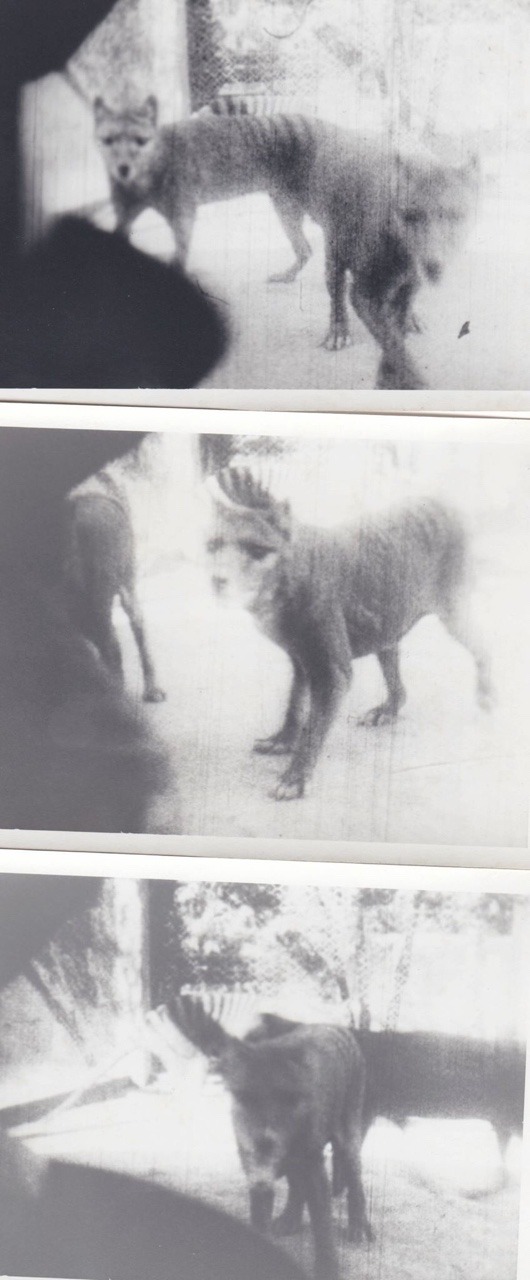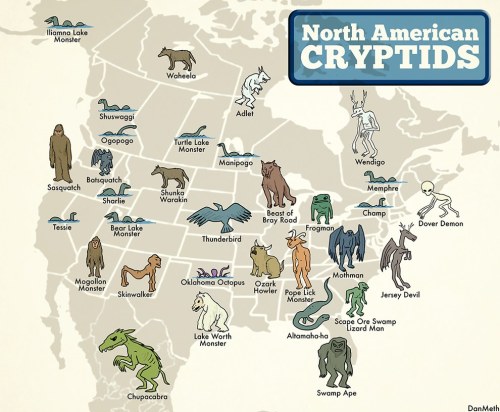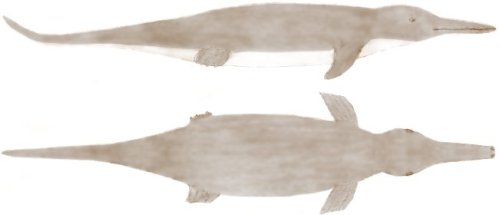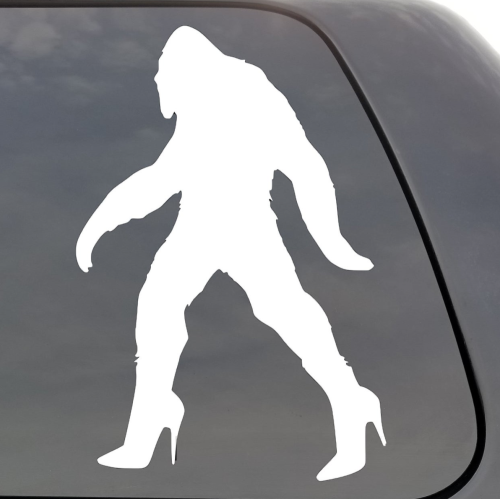Some Beautiful 35mm Stills From A 1928 Film Of Three Thylacines Residing At The Beaumaris Zoo, Hobart.


Some beautiful 35mm stills from a 1928 film of three thylacines residing at the Beaumaris Zoo, Hobart. Stills taken by James Malley.
More Posts from Jackasslope and Others
This thylacine footage was recently rediscovered by researchers Gareth Linnard, Branden Holmes and Mike Williams on March 4, 2020.
Originally filmed by the Bester family c. 1933-1936, the 9.5mm black and white film includes 7 seconds of a captive thylacine in its enclosure at the Beaumaris Zoo.
Such a rare and amazing find!


These sketches were drawn by Owen Burnham of a globster known as Gambo. The 15 year old measured the strange creature on June 12, 1983, when he found it on a beach in Islamic Republic of The Gambia. It measured to be “15 - 16 feet long”. While some believed the creature to be a dolphin, it had two nostrils at the tip of its snout, which dolphins do not. The body was not DNA tested as Burnham claims he did not think to take samples until he realized he could not identify the creature in any books.

The more modern interest in the legendary Loch Ness Monster was ignited after several sightings that took place in 1933. One of the sightings was recorded in the Inverness Courier in May. The witnesses of the May encounter reported “an enormous animal rolling and plunging” on the surface of the water. In June of the same year, George Spicer and his wife claimed to have seen an unknown creature cross the road on which they were traveling until it reached the waters of the loch and vanished. Spicer said that the creature was about 4 feet tall and 25 feet long with a strangely long neck that was a little thicker than an elephant’s trunk. The creature had no visible legs.

Gef, sometimes referred to as the Talking Mongoose or the Dalby Spook, was a talking mongoose reported to inhabit a farmhouse known as Cashen’s Gap on the Isle of Man.
In September 1931, the Irving family, consisting of James, Margaret and 13 year old daughter Voirrey, heard scratching and rustling noises behind their farmhouse’s wooden wall panels. Initially they thought it was a rat, but then the unseen creature began making different sounds. At times it spat like a ferret, growled like a dog or gurgled like a baby.
The entity soon revealed an ability to speak and introduced itself as Gef, a mongoose. It claimed to have been born in New Delhi India, in 1852. According to Voirrey, the only person to see him properly, Gef was the size of a small rat with yellowish fur and a large bushy tail. (The Indian mongoose is in reality much larger than a rat and does not have a bushy tail). He would never allow anyone but Voirrey to see him, however, and if he didn’t like you, you could count on being insulted, or pelted with pebbles.
Many researchers suspected that Gef was a poltergeist, and the Irving’s daughter Voirrey was at the right age for that sort of thing. If a poltergeist, Gef was rather a nice one. He often talked and joked with the family, and would occasionally leave small game, mostly rabbits, on their doorstep for dinner.
Gef claimed at times to be “an extra extra clever mongoose”, an “Earthbound spirit” and “a ghost in the form of a mongoose”. He once said: “I am a freak. I have hands and I have feet, and if you saw me you’d faint, you’d be petrified, mummified, turned into stone or a pillar of salt!”
The only physical evidence cited in support of Gef’s existence would appear to be a series of footprints,none of which were identified as those of a mongoose, stains on the wall, supposed hair samples which were identified as having belonged to the Irving’s sheepdog, and several photos which were claimed by the Irvings to depict Gef, (such as the one above).
James Irving kept diaries about Gef between 1932 and 1935. These diaries, along with reports about the case, are in Harry Price’s archives in the Senate House Library, University of London.

The term Blobsquatch is used when an image is taken of a supposed Sasquatch but nothing can be deciphered out of the vaguely human-shaped “blob”. These blobs can commonly be debunked as dead trees, tree stumps, or shadows. The term was first used on Bigfoot Forums in the early 2000s by a man by the name of Vito Quaranta.




Colourised footage of Benjamin, the last know Tasmanian Tiger (Thylacine).
Benjamin died on September 7th, 1936 in Hobart zoo. It is believed that he died out of neglect, as he was locked out of his shelter and was exposed to the searing hot sun and freezing cold night of Tasmania.
The Thylacine was one of the last large marsupials left on Australia (the other being the Kangaroo) after a great extinction event occurred around 40 thousand years ago. This extinction event, caused mainly by the arrival of humans, wiped out 90% of Australia’s terrestrial vertebrates, including the famous Megafauna.
The Thylacine was around 15-30kg (33-66lbs), were carnivorous, and had numerous similarities to other species like dogs, despite not being related and purely by chance, in a phenomenon known as convergent evolution (just like the ability to fly of bats and birds, despite following different evolutionary paths). Not only that, they could open their jaws up to 120 degrees, could hop around on two legs like a kangaroo, and both males and females had pouches.
Lastly in a cruel twist, the Tasmanian government decided to protect the Thylacine - just 59 days before the last one died, in a very notable case case of “Too little too late”. To date, many biologists believe that there are still Thylacine roaming the wild plains of Australia.
-
 falsesun reblogged this · 2 months ago
falsesun reblogged this · 2 months ago -
 itwasmeanttobr liked this · 2 months ago
itwasmeanttobr liked this · 2 months ago -
 adulthumanproblem reblogged this · 2 months ago
adulthumanproblem reblogged this · 2 months ago -
 iamsancho reblogged this · 2 months ago
iamsancho reblogged this · 2 months ago -
 iamsancho liked this · 2 months ago
iamsancho liked this · 2 months ago -
 joeldirtybastard reblogged this · 2 months ago
joeldirtybastard reblogged this · 2 months ago -
 heartofstanding reblogged this · 2 months ago
heartofstanding reblogged this · 2 months ago -
 dilfdisease liked this · 2 months ago
dilfdisease liked this · 2 months ago -
 overthinkinks reblogged this · 2 months ago
overthinkinks reblogged this · 2 months ago -
 see-sawed liked this · 2 months ago
see-sawed liked this · 2 months ago -
 nekromantik97 liked this · 2 months ago
nekromantik97 liked this · 2 months ago -
 axshadows liked this · 2 months ago
axshadows liked this · 2 months ago -
 siberian-khatru-72 reblogged this · 2 months ago
siberian-khatru-72 reblogged this · 2 months ago -
 siberian-khatru-72 liked this · 2 months ago
siberian-khatru-72 liked this · 2 months ago -
 perkk27 liked this · 2 months ago
perkk27 liked this · 2 months ago -
 old-memoria liked this · 2 months ago
old-memoria liked this · 2 months ago -
 bbbrianjones reblogged this · 2 months ago
bbbrianjones reblogged this · 2 months ago -
 bbbrianjones liked this · 2 months ago
bbbrianjones liked this · 2 months ago -
 thespiritofvexation reblogged this · 2 months ago
thespiritofvexation reblogged this · 2 months ago -
 beigetiger liked this · 3 months ago
beigetiger liked this · 3 months ago -
 rottenarmour reblogged this · 3 months ago
rottenarmour reblogged this · 3 months ago -
 thebigjawpokemon reblogged this · 3 months ago
thebigjawpokemon reblogged this · 3 months ago -
 mikerunnerboi reblogged this · 3 months ago
mikerunnerboi reblogged this · 3 months ago -
 tumblrisweird reblogged this · 3 months ago
tumblrisweird reblogged this · 3 months ago -
 tumblrisweird liked this · 3 months ago
tumblrisweird liked this · 3 months ago -
 genderless-ghost reblogged this · 3 months ago
genderless-ghost reblogged this · 3 months ago -
 fandomflux33 liked this · 3 months ago
fandomflux33 liked this · 3 months ago -
 squintyfist liked this · 3 months ago
squintyfist liked this · 3 months ago -
 damthosefandoms reblogged this · 3 months ago
damthosefandoms reblogged this · 3 months ago -
 damthosefandoms liked this · 3 months ago
damthosefandoms liked this · 3 months ago -
 augory reblogged this · 3 months ago
augory reblogged this · 3 months ago -
 forestmeadow reblogged this · 3 months ago
forestmeadow reblogged this · 3 months ago -
 future-kat-lady reblogged this · 3 months ago
future-kat-lady reblogged this · 3 months ago -
 lcd-mission liked this · 3 months ago
lcd-mission liked this · 3 months ago -
 aas30 reblogged this · 3 months ago
aas30 reblogged this · 3 months ago -
 m00s3m4n reblogged this · 3 months ago
m00s3m4n reblogged this · 3 months ago -
 m00s3m4n liked this · 3 months ago
m00s3m4n liked this · 3 months ago -
 shimmering-skies liked this · 3 months ago
shimmering-skies liked this · 3 months ago -
 sappho114 reblogged this · 3 months ago
sappho114 reblogged this · 3 months ago -
 cybermax reblogged this · 3 months ago
cybermax reblogged this · 3 months ago -
 cybermax liked this · 3 months ago
cybermax liked this · 3 months ago -
 curryandcremebrulee liked this · 3 months ago
curryandcremebrulee liked this · 3 months ago -
 lemoncoughdrop liked this · 3 months ago
lemoncoughdrop liked this · 3 months ago -
 volcanows reblogged this · 3 months ago
volcanows reblogged this · 3 months ago -
 fencewalker liked this · 3 months ago
fencewalker liked this · 3 months ago -
 reallygrandkitten reblogged this · 3 months ago
reallygrandkitten reblogged this · 3 months ago



